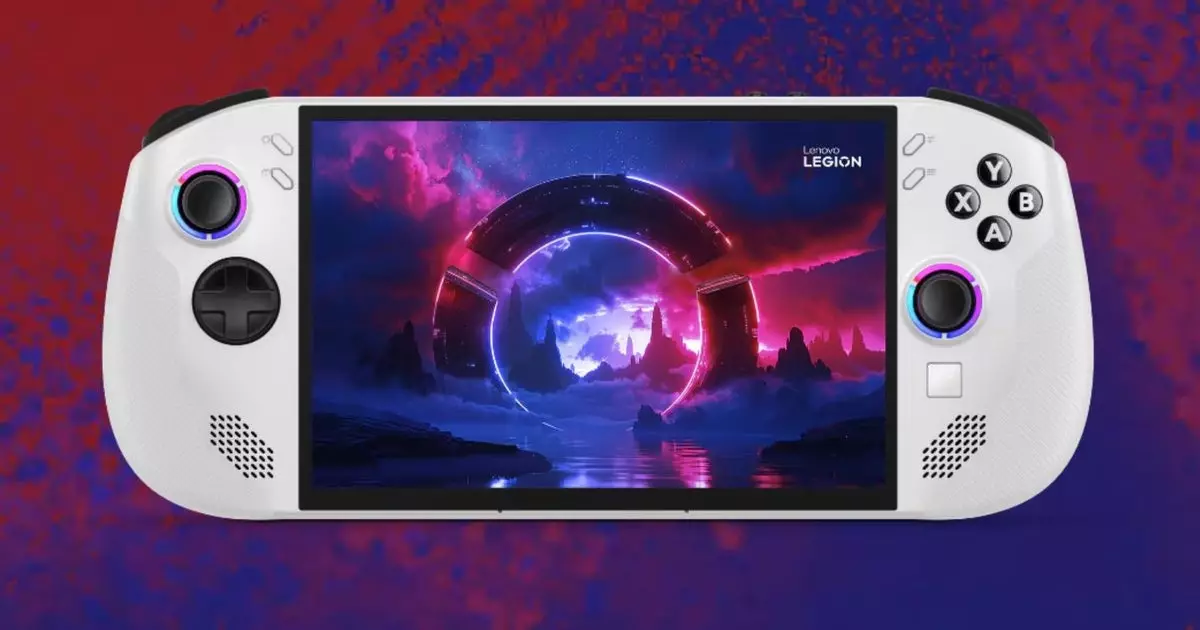The handheld gaming market is witnessing an evolution marked by innovative designs and significant advancements in technology. Lenovo’s new entry, the Legion Go S, represents a strategic shift in the portable gaming landscape. Abandoning the detachable controllers that characterized its predecessor, the Legion Go, this compact and economically viable device is poised to support SteamOS, potentially positioning itself as the first officially licensed handheld device to operate on this platform, outside Valve’s own Steam Deck.
One of the most notable features of the Lenovo Legion Go S is its transition to SteamOS, which marks a departure from the conventional Windows 11-based systems that have dominated the handheld market. Windows 11, while versatile, has struggled to adapt to the unique needs of handheld gaming, particularly regarding user interface and controls. Its design hasn’t always translated well to smaller screens, and players often find the user experience clunky. In contrast, SteamOS is tailored for gaming, offering a streamlined interface that enhances the overall user experience.
This compatibility with SteamOS not only caters to gaming enthusiasts but also provides a level of flexibility through its Desktop Mode, which integrates essential functionalities for those who desire a more traditional computing experience. Lenovo’s decision to embrace SteamOS can be seen as a timely acknowledgment of the direction in which the gaming industry is heading, wherein user-centered design will be a determining factor for the success of portable gaming devices.
The Legion Go S comes in at a significantly lighter weight of 730g compared to the original Legion Go, which weighed 854g. This reduction in heft, alongside a downsized 8-inch display with a 1200p resolution and a 120Hz refresh rate, makes the new model more accessible and convenient for gamers who prioritize portability. The previous generation’s nearly 9-inch screen may have offered impressive visuals but often overwhelmed its processing capabilities. In this new iteration, Lenovo has evidently sought to strike a balance between performance and form factor.
The choice of power also plays a critical role in the gaming experience. The option to select between the Ryzen Z1 Extreme and AMD’s Ryzen Z2 Go boosts the device’s appeal, albeit at different price points—$729 for the Z1 Extreme and $599 for the Z2 Go. The latter may not boast the same performance levels as its predecessor, however, offering consumers an appealing entry-level option without sacrificing quality.
If we assess the adaptability of the Legion Go S regarding its physical design, we find worth noting improvements like the inclusion of Hall Effect joysticks and a diminutive trackpad, which enhances navigational ease—a feature often overlooked in contemporary handheld devices. The ergonomics of using a trackpad in conjunction with intuitive controls can significantly improve gameplay, offering a seamless transition between different gaming formats.
Moreover, Lenovo appears to have addressed battery life concerns that plagued larger handheld devices. With a 55Whr battery, which is an increase of 5WHr from the original, this device aims to offer longer periods between charges. Given the already low power consumption owing to the reduced display specifications, users can anticipate an impressive playtime that surpasses many of its competitors, including the Steam Deck.
As the gaming landscape becomes increasingly competitive, new devices need to carve out their niche effectively. The Lenovo Legion Go S has a clear agenda: to leverage SteamOS for a superior gaming experience while delivering a well-rounded package in terms of design and functionality. While the device will inevitably have to prove itself in terms of gaming performance and battery efficiency, its introduction to the market surely ignites curiosity and intrigue among gamers.
The Legion Go S seems well-positioned to become a compelling option for those in search of a portable gaming solution that balances affordability, user experience, and performance. As we await its release—anticipated for January for the Windows version, followed by the SteamOS variant in May—there’s no denying that Lenovo has strategically placed itself in a promising position within the handheld gaming domain.


Leave a Reply